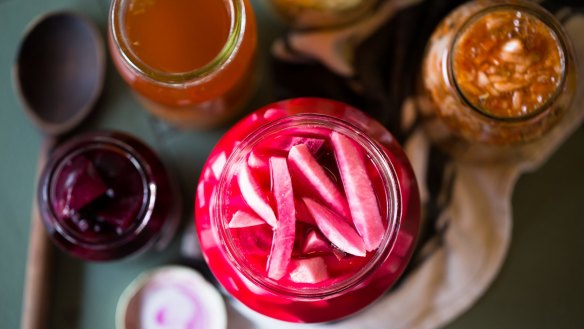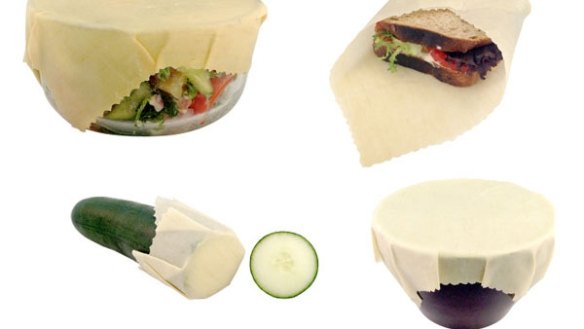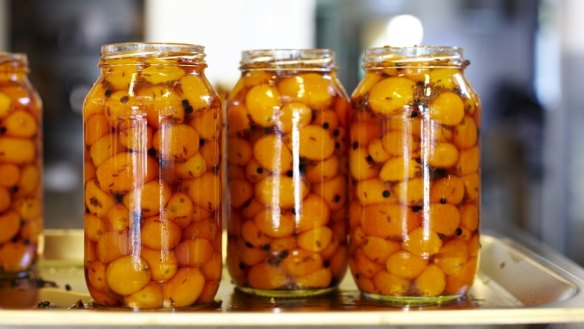How to live waste-free (is this the end of rubbish?)

As she travelled up and down the east coast of Australia, Jess O'Hara (@bedsandlove), left a collection of bemused baristas in her wake.
"It came with free jam inside when I bought this coffee cup," jokes Jess a barista from the Mornington Peninsula. The coffee cup in question is a Bonne Maman jam jar which handily, as Jess points out enthusiastically, "never leaks with the lid on, even when it's upside down!"
The 5Rs of zero-waste Refuse, Reduce, Reuse, Recycle and Rot (to be followed in order) were created by Bea Johnson, the French zero-waste guru who calls California home. The poster child for the movement it is hard not to be slightly jealous of her uncluttered minimalist home as she exudes the calm of someone who never has to remember if it's bin night.
Zero-waste shopping is catching on globally as zero-waste supermarkets like Original Unverpackt in Berlin, Granel in Barcelona and In.gredients in Austin inspire a slew of crowdsourcing supermarket projects tapping into the zero-waste zeitgeist. In Australia, stores like the Friends of the Earth Co-op have been pushing the zero-waste message for years while businesses like The Source Bulk Foods have responded to the recent growth in zero-waste awareness to open twenty stores since 2012.
It's easy, when you decide to try a zero-waste life, to want to buy lots of nice shiny reusable packaging and fancy shopping bags but in the spirit of refuse, reduce and reuse here are some tips for repurposing items you might already have lying around.
Beeswax wraps

There are some really lovely wraps out there in beautiful colours and prints that would liven up the inside of any fridge. However, since reducing resources is the aim of the game it's a really good idea to make your own. "I find that it is a great way to repurpose old clothing that is past wearing but I still love the pattern," says Jess, "there are plenty of great online tutorials to get you started."
Pillowcases
Old pillowcases are perfect for collecting a loaf of bread. "You can freeze already sliced bread in the pillowcase," says O'Hara. "they're also great for cutting down into reusable bags since you've already got three sides sewn."
Tea-towels
"I understand that some people are very precious about their tea-towels but really they are for cleaning and drying and doing jobs in the kitchen." says O'Hara. "Have your 'best' tea-towels for drying but have another stash and use them to drain oil and mop up spills and save the paper towel."
Jars, jars, jars

Is there anything you can't transport in a jar? "Not really," O'Hara speculates. "Some deli assistants look shocked when I hand over a jar but most are used to it now." Jars can also be plastic-free lunch boxes, drink bottles, vases, freezer storage containers, candle holders, pencil holders … the list is long and the op-shops are full of them.
Packaging
It sounds weird but if you've still got the lovely drawstring bag that your pjs or shoes came in five years ago chances are you're not using it to store your pjs away (or do people actually do that?). Best put those bags to work hauling flour from the store.
Furoshiki
This ancient art of wrapping declined in Japan with the advent of plastic bags. Recently it has seen a resurgence as a beautiful and eco-friendly way of carrying food and wrapping presents. It might not be useful if you're doing the weekly shop but it can be a versatile way to get a few items home from the market. Just as there is a knot for every occasion there is also a furoshiki tie for every type of parcel, the one for carrying two bottles is a favourite. An old scarf or piece of material will do the trick as long as it is roughly square. At a pinch you could repurpose one of your 'best' tea-towels.
You can't change everything overnight. O'Hara says her move towards a zero-waste life has been years in the making. 'I've Instinctively done more and more although I've always bought second-hand where I can because the world already has enough of the items we need. I keep looking at how I shop and incorporating new ways to reduce my packaging consumption and waste. I'm certainly not perfect yet but it is exciting to find more and more people beginning to care.'
The best recipes from Australia's leading chefs straight to your inbox.
Sign up